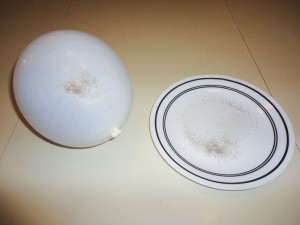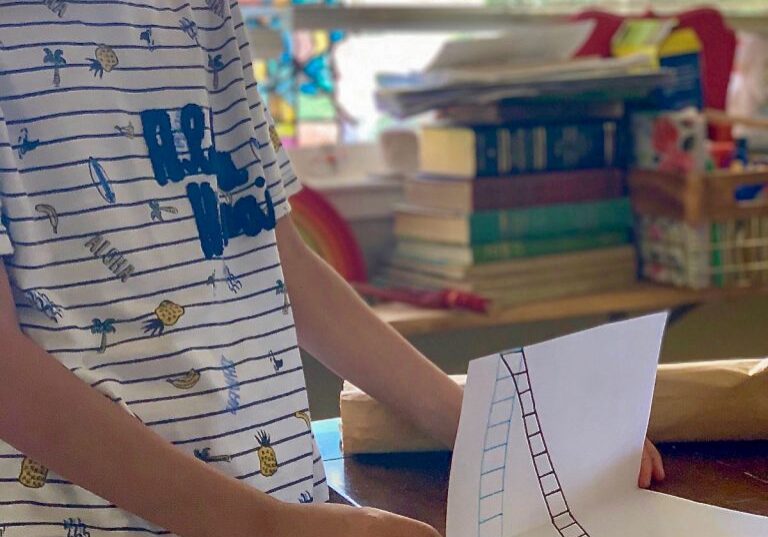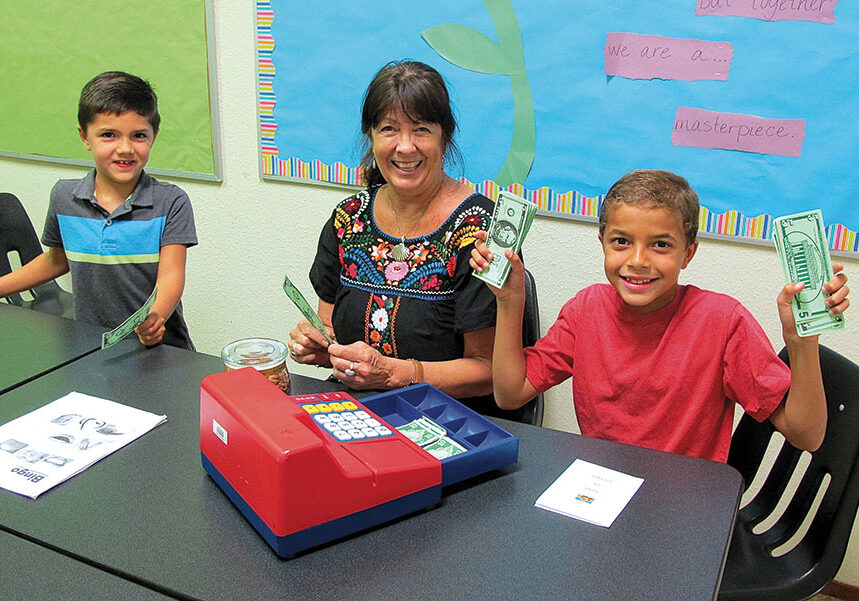

Maybe you can come up with a cool technique for getting the salt and pepper apart, but did you know you can use static electricity to do it easily?
What is static electricity? Ever shuffle across the carpet and then reach out for a doorknob only to get a shock when you do so? Ever wonder why that happens? Let’s explore the science behind static electricity and figure out how to use it to separate the salt and pepper.
Materials:
A plate, salt, ground pepper, a balloon, and a flannel shirt (or something similar) to use to create a static charge.
Procedure:
1. Combine the salt and pepper on the plate. Mix them well so it’s hard to pull them apart.
2. Blow up the balloon and tie it shut.
3. Rub the balloon vigorously (but carefully) on a flannel shirt (any shirt should probably do). You’ll know the balloon is charged when it starts to crackle or makes your hair stand up when you hold near your arm or head.
4. Hover the balloon over the top of the salt and pepper, and watch what happens!
Explanation:
If properly charged, the balloon will attract the tiny ground pepper flakes immediately out of the salt. Those little bits will be plastered onto the side of the balloon.
But why?
When you rub the balloon on the flannel shirt, tiny things (particles) called “electrons” move from the shirt to the balloon. The electrons hold an electrical charge, and that charge attracts certain substances … like the hair on your arm or head, or the bits of pepper. (Salt won’t move for reasons you’ll learn about in chemistry and physics classes.)
Electrons are found in everything around us and play a big role in creating heat and the flow of electricity. When the balloon becomes supercharged with electrons it creates an unbalanced, unnatural condition that causes a flow of electricity as the particles try to rebalance themselves.
Experiment further:
Good scientists think of questions they can ask and ways to change a system. Can you? Can you think of other things that the balloon might attract? Try sticking the balloon to a wall and see what happens. Here’s another trick: Charge up the balloon and then slowly bring it closer to a thin stream of water coming out of your faucet. It will bend the water out of the way!
I hope you enjoyed these simple experiments and learned a little about electrons and static electricity.
Posted in: Education
Comment Policy: All viewpoints are welcome, but comments should remain relevant. Personal attacks, profanity, and aggressive behavior are not allowed. No spam, advertising, or promoting of products/services. Please, only use your real name and limit the amount of links submitted in your comment.
You Might Also Like...

Simple Science Experiments: Homemade Lava Lamp
Liquid motion lamps, more commonly known as Lava lamps, are cool things to stare at for hours. Learn to make a simple version (without the cool lights) and learn about […]

Five Things You Can Start Doing Today to Raise a Motivated Learner
One of the biggest frustration parents can face is getting their children motivated to learn. It can be difficult to get kids to embrace learning, whether it’s mastering multiplication, learning […]

The Committed Athlete, On And Off The Field
Over the past two years, Pleasant Valley High School and Chico High School have implemented an initiative called Athlete Committed, helping to educate over 4,000 parents and student athletes on […]

The Benefits of Early Second Language Learning
As I approach the classroom to pick up my kids, I can hear children’s voices but the dialogue isn’t clear. Judging by the giggles and loud chatter I can tell […]


